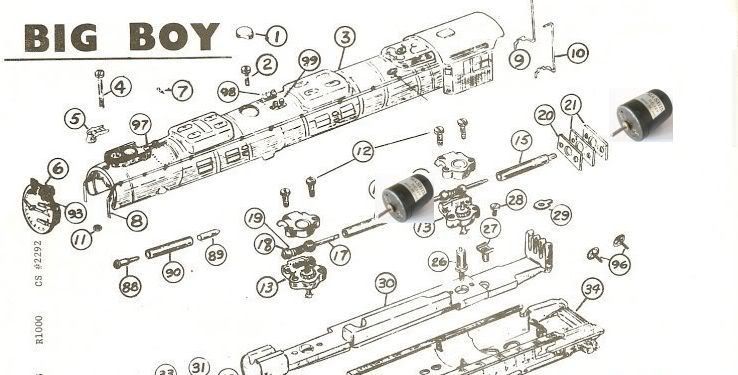Spawn of Chaos said:
Yeah, same one. However...I looked at the gearing, and only one pair of drive wheels is geared on each drivetrain.
I might add some lead weight if it proves to be too powerful for the weight; it's just for fun anyways.
On steam engines, only gearing one axle is normal in HO. The remaining drivers are driven by the side rods. The prototype is the same way. The cylinders push the drive rods, which is attached to the main driver set. The side rods cause the rest of the drivers to turn at the same time as the main driver.
An articulated engine (like a Big Boy) has 2 separate steam engines, each with its own set of cylinders, drive rods, and side rods. On the prototype, the front engine is hinged at the rear to enable a large steam locomotive to go around sharper curves. Model articulated locos generally let both engines pivot near the middle of each to permit much sharper curves than the prototype.
Diesels and geared steam locomotives generally do not have side rods to transmit the power so the better models are geared to all axles.
On any model, if the drive wheels start spinning before the motor has reached its maximum current rating, you can add more weight to get more traction. If the motor has not reached its max current, adding a second motor serves no purpose. On the other hand, if the motor reaches its max current before the drive wheels slip, then a larger or second motor is needed to take advantage of the existing traction. A single larger motor usually makes for a smoother running loco than 2 smaller motors. The only advantage of 2 motors on an articulated is being able to see each engine slip its drivers independently (like the prototype). I don't have track long enough to put enough cars to get into this situation, so it doesn't matter much to me.
As far as what other people's opinions are (the poll), who cares? You want conclusions based on experiences and facts, not opinions (IMHO

!).
my thoughts, your choices


